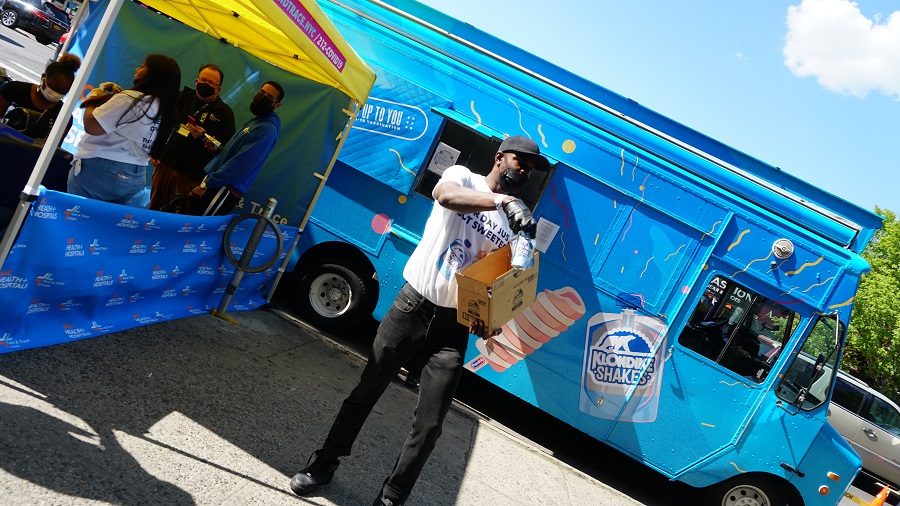Reaching the reachable unvaccinated

About 75 million American adults remain completely unvaccinated. This is a good article about the many reasons why perhaps close to half of this group isn’t made up of hardcore ideologues who oppose getting vaccinated because of some combination of toxic political and pseudo-scientific beliefs, but rather of people who still have genuine access problems, usually related to some combination of work requirements, transportation, and child care:
Those who aren’t yet vaccinated are much more likely to be food insecure, have children at home and earn little. About three-quarters of unvaccinated adults live in a household that makes less than $75,000 a year. They are nearly three times as likely as the vaccinated to have had insufficient food recently. Many of them have pressing concerns they can’t just put aside because they need to get a vaccination.
Access is far more widespread than it was at the beginning of the year. Many cities now offer multiple venues for getting it without needing an appointment. But about 10 percent of the eligible population still lives more than a 15-minute drive from a vaccine distribution location. And even if there’s a site down the road, it usually requires taking time off work — not just to get the shot but also potentially to recover from the side effects — arranging transportation and figuring out child care.
“Missing out on a few hours of work seems very easy to us, but in fact it could be the matter of having food for the family versus not,” said Ann Lee, the chief executive of the nonprofit Community Organized Relief Effort. For these people, when they’re weighing whether to get a vaccination or potentially forgo some wages, “the wages are going to win out.”
Those who are unvaccinated are also likely to work in essential jobs like agriculture and manufacturing that don’t allow them to step away from work. They work long hours and may prioritize time with their families or communities when they finally get a break. People who have multiple jobs may find it impossible to schedule a shot in between all of their shifts.
The reflexive response in American culture — so reflexive that even most progressives tend to fall into it under any kind of psychological stress — is to blame social crises on individual moral failure (“let the plague rats die, I don’t care any more!”), rather than on structural factors, that can actually be addressed successfully by sufficiently aggressive structural responses:
“We pretty quickly exhausted those who were easiest to reach and vaccinate,” Tara Smith, a public health professor at Kent State, told me. “This next phase is more difficult, but I don’t think it’s impossible to continue to get more people vaccinated. We just have to get creative.”
A block party doesn’t work in every community, particularly more rural ones. For those places, an event could be staged at a church or a county fair. Anything that allows people to discuss their concerns with experts and get vaccinated on the spot erases dangerous lag time. Dr. Tello’s organization found that many disappeared in the time between an educational conversation and a vaccination appointment weeks later.
Another way to take the vaccines to people for whom the logistics are complicated is to do it at workplaces. Ms. Lee’s organization held a vaccination drive at a construction site in Washington, D.C., and vaccinated 165 people. “They wanted to get vaccinated. There was just no way some of these day laborers were going to take off of work and maybe get sick,” Ms. Lee said. In January, Riverside, Calif., began a program to take vaccines into the fields to reach agricultural workers.
There are plenty of other smart places to distribute vaccines. Take them to food pantries, where low-income and food-insecure people show up by necessity on a regular basis. Do vaccinations at shopping centers where everyone goes to buy food. Vaccine drives could also be held on the first day of school for parents and older children alike; it’s late in the game, since it takes weeks for full immunity, but it’s better than missing them entirely.
Going door to door can also reach people, particularly those who are homebound. The Central Falls Housing Authority in Rhode Island offered shots to its public housing residents at the end of last year, and by January, 80 percent had been vaccinated. In Los Angeles, Ms. Lee’s team contacts the homebound first to talk through any concerns and again a week later to administer a vaccine. Vaccines could even be paired with Meals on Wheels deliveries.
This isn’t rocket surgery: for one thing it’s about a thousand times less cognitively challenging than developing completely safe and almost completely effective vaccines that could completely eliminate a deadly pandemic if we could just figure out how to get as close to everybody as possible vaccinated.
You just have to throw money and logistical creativity at the problem, while not indulging in the perverse pleasure of imagining that everybody in America who gets COVID going forward deserves to get it, because of Freedom and Individual Responsibility.
You know — the things right wingers are always talking about, to the exclusion of 98% of social reality.


